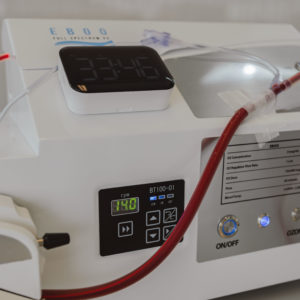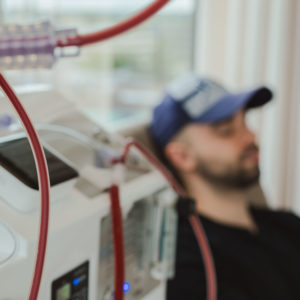4 min|Integrative
Type 2 Diabetes: Your Guide to Prevention and Treatment
Heart Health, DiabetesAs we learnt in Part I, inflammation is at the core of the development of Type 2 Diabetes and Cardiovascular Disease.
Our modern diet and lifestyle contain many triggers of inflammation and promote an increase in body fat, that in itself is inflammatory.(1) Although some people have a genetic predisposition to the development of diabetes, interaction with a variety of environmental factors is required to promote expression of these genes.(2) By addressing inflammatory environmental factors, we can help to prevent and treat Diabetes Type 2 while additionally promoting good health.
A Paleo Template
You may have heard the word ‘Paleo' thrown around. For some, it is synonymous with an excess of bacon, eggs, and oils, without a veggie in sight. However, the Paleo diet actually refers to what we ate historically, prior to the agricultural and industrial revolutions that saw significant changes in our diet towards grains and processed foods. It is a varied diet, built on vegetables, fruits, nuts, seeds, fish, meat, eggs, and certain starchy plants such as root vegetables.
The Paleo diet has been shown to decrease weight, improve blood sugar, decrease triglycerides, decrease blood pressure, and improve lipid profiles.(3) In a comparison study, the Paleo diet outperformed the low-fat, whole grain and legume-rich diet recommended by the American Diabetes Association.(4)
How can you ‘go Paleo’?
Firstly, cut the sugar, processed, packaged foods, and grains - anything we didn’t have access to millions of years ago. Instead, emphasize nutrient-dense foods such as vegetables, avocado, olive oil, berries, nuts, seeds, wild salmon, eggs, and grass-fed beef. Whenever possible, choose organic, hormone-free animal products, wild fish rather than farmed, and organic produce.
This diet naturally removes inflammatory components such as industrial seed oils, refined carbohydrates, chemical additives, and environmental toxins. It can also be a helpful template for a trial elimination of specific foods to help determine individual sensitivities. Additionally, the Paleo diet provides a natural increase in a variety of nutrients helpful to management of inflammation if you compose your meals well; fill your plate with mostly plants, a serving of healthy fat, and a small serving of well-sourced animal protein to reap a wide variety of macro - and micronutrients.(5)
Move It
We can look back to our history to determine how to move. We are made to be active. Yet nowadays, we spend much of our time sitting, staring at screens. Sedentary lifestyle habits such as prolonged sitting and television watching are strongly correlated with increased incidence of diabetes and cardiovascular disease.(6) In contrast, exercise improves blood glucose levels(7), leptin and insulin sensitivity(8), and may decrease inflammation.(9)
But we also benefit from decreasing the time we spend being sedentary and increasing the total time we spend moving, beyond short bursts of exercise. This could look like walking to work instead of driving, working at a standing desk, scheduling short stretching breaks every hour, and cycling to get groceries. Every bit helps and will add up throughout the day!
Unwind
Research has shown a single night of sleep deprivation can induce insulin resistance.(10) Chronic sleep loss may be a risk factor for insulin resistance, weight gain, and Type 2 diabetes.(11) Stress induces pro-inflammatory changes within our body and interferes with our ability to regulate inflammation.(12,13) We can mitigate these effects by making sleep a priority, ensuring that we’re getting around 7-9 hours every night, and including stress-relieving practices daily, not only during stressful times. Stress relief looks different for each of us; explore habits that help you to feel relaxed, present, and grounded in your body. Meditation is a great option; it has been shown to improve blood pressure and insulin resistance as well as nervous system activity.(14)
Heal the Gut
The role of the gut microbiome in both health and disease states is currently under intense review. Alterations in the gut microbiome have been linked to the development of a wide variety of conditions, including Type 2 Diabetes. Medication, lifestyle, health history, and diet all contribute to the composition of the gut microbiome.(15) A Paleo-type diet can be incredibly helpful in removing many inflammatory factors that negatively impact the gut microbiome. Depending on the health of your microbiome, completing a gut healing protocol may also be indicated.
Diabetes, like many conditions, appears to be strongly linked to our modern lifestyle. A Paleo lifestyle removes many of the concerning pro-inflammatory behaviours and foods of today, replacing them with healthy habits and nutrient-dense foods.
If you’re concerned about your blood sugar levels, or simply want to decrease inflammation in your body, consider seeing one of our Naturopathic Doctors for a fully optimized and individualized health and nutrition plan.
Click here to book your consultation.
References
- https://www.jci.org/articles/view/25102/version/1
- https://www.ncbi.nlm.nih.gov/pmc/articles/PMC3746083/
- https://cardiab.biomedcentral.com/articles/10.1186/1475-2840-8-35?utm_source=blog&utm_campaign=rc_blogpost
- https://www.ncbi.nlm.nih.gov/pubmed/25828624
- https://thepaleodiet.com/eliminating-non-paleo-foods-improves-nutrient-density/
- https://www.ncbi.nlm.nih.gov/pubmed/12733740
- https://www.ncbi.nlm.nih.gov/pmc/articles/PMC3587394/
- https://www.ncbi.nlm.nih.gov/pubmed/16936204
- https://academic.oup.com/jcem/article/95/6/2963/2598810http://onlinelibrary.wiley.com/doi/10.1111/j.1365-2249.2010.04240.x/full
- https://academic.oup.com/jcem/article/95/6/2963/2598810
- http://www.physiology.org/doi/abs/10.1152/japplphysiol.00660.2005
- https://www.sciencedirect.com/science/article/pii/S0889159107000839
- http://www.pnas.org/content/109/16/5995.short
- https://jamanetwork.com/journals/jamainternalmedicine/fullarticle/410453
- https://www.ncbi.nlm.nih.gov/pmc/articles/PMC5423958/
Related Articles

4 min|Dr. Alex Chan
EBOO for Chronic Inflammation: A Natural Approach for Systemic Relief
Regenerative Medicine, EBOO Therapy
4 min|Dr. Alex Chan
EBOO Therapy for Autoimmune Conditions: Exploring the Potential Benefits
Autoimmune Disease, Regenerative Medicine, EBOO Therapy


